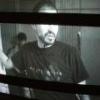-
Posts
12 -
Joined
-
Last visited

Benjamin Kantor replied to Evan Samaras's topic in Post Production

Benjamin Kantor replied to Zachariah C. Bensel's topic in Post Production

Benjamin Kantor replied to Benjamin Kantor's topic in General Discussion

Benjamin Kantor replied to Benjamin Kantor's topic in General Discussion

Benjamin Kantor replied to Benjamin Kantor's topic in General Discussion

Benjamin Kantor replied to Benjamin Kantor's topic in General Discussion

Benjamin Kantor replied to Benjamin Kantor's topic in General Discussion

Benjamin Kantor replied to Albert Smith's topic in Post Production


